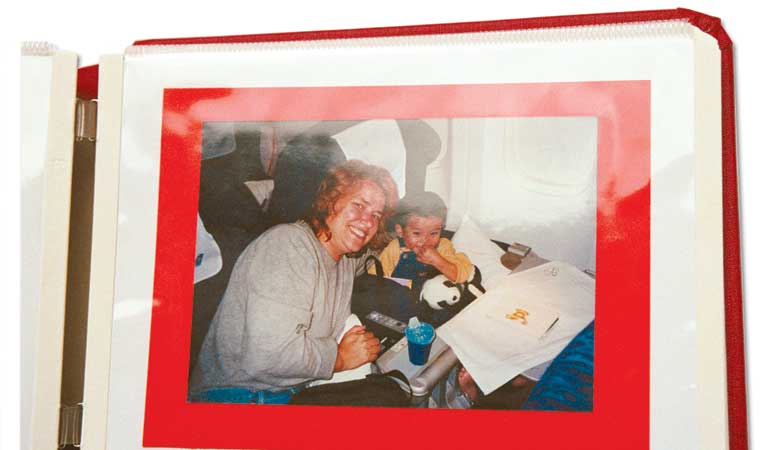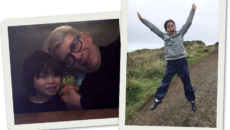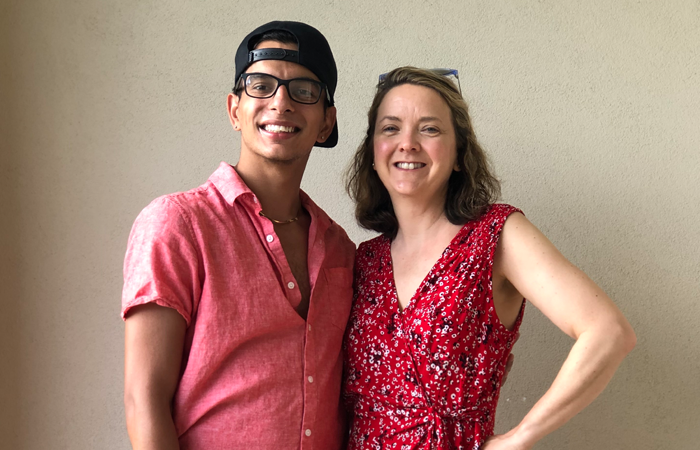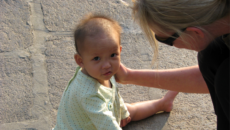When I returned from China with my beautiful baby daughter, Claire, I brought home enough paper memorabilia to fill a trunk. There were photographs, documents, ticket stubs, receipts, postcards, matchbooks, maps, orphanage brochures, and more.
I organized some of these and put together an album. But to tell my daughter her adoption story, I created a different book entirely. I now have three Asian children, and if I’ve learned anything about making adoption lifebooks for them, it’s to keep it simple. Use a plain layout — perhaps one picture or item per page — and make the text direct and natural. I hope these step-by-step specifics will help you create a sweet story for your baby or child.
Before baby
Set aside some of the best photos and a few important papers from your journey — and before. For each page of pictures and memorabilia, I wrote brief text in simple language. Some people start with the referral picture of their child, if they received one. I began with pictures of my family and home before I went to China. Claire’s book begins with a picture of her cradle, captioned, “The cradle is empty. There are a mommy and a dog and a house but no baby.”
Ready to go
Then you might include one or two significant papers: a letter from your adoption agency, your baby’s original health report, or a copy of your travel itinerary. Next to this I explained how I set out to find a special child, and described some of the feelings I had as I left for China. Remember, you are writing words for your baby to hear. (I confess that the subsequent books I made for my two sons contained no papers, just pictures.)
The meeting
If you have airport and hotel photos, these make a nice transition into the most emotional part of your book, the pictures of the meeting between you and your child. Domestic adopters may have photos of the hospital and the child’s birth. Include special details that will make the story even more interesting to your child. Case in point: The Hangzhou Children’s Welfare Institute, where our daughter was, is set in the middle of a lovely peach orchard. Such details enrich the story, especially if you have a variety of photos to go along with them.
Becoming a family
Think carefully about how to explain the process you went through to get your child, including delays and difficulties, but tell the story in words a young child can understand. In Claire’s book, I said, “Mommy had to wait a long time before she could take the baby home. But she didn’t mind because she loved the baby so much and knew they were meant to be a family.” Photos of the adoption process — for those of us who’ve adopted from China, pictures of meeting orphanage officials, signing the adoption papers, the Civil Affairs and passport offices, the United States consulate in Guangzhou — along with a brief explanation complete this part of the story.
Where it started
To help your child “see” her beginnings, include photos of the city or town where you met. These might be pictures of the downtown area, street life, and areas of scenic beauty — we had the West Lake in Hangzhou. “This is where the baby came from.” If you traveled in a group, as we did, shots of all the parents and babies are a must. A photo of your flight home, if you were clear-eyed enough to have taken one, is a fitting cap for the journey.
Coming home
Finally, there’s the homecoming. I included pictures of family and friends who met me at the airport and at home, and wrote about some of my feelings and how Claire behaved. My book ends with a photo of the cradle I mentioned at the beginning, only this time it is filled. A storybook, written in simple language with your child in mind, is a beautiful way to tell how your family was formed. My daughter loved looking through her book even when she was a toddler and didn’t understand much of it. Later it served as an easy way to begin talking about her adoption and place of birth. As children get older, they revisit the story in their adoption lifebook again and again, each time with a new appreciation of their family beginnings.



